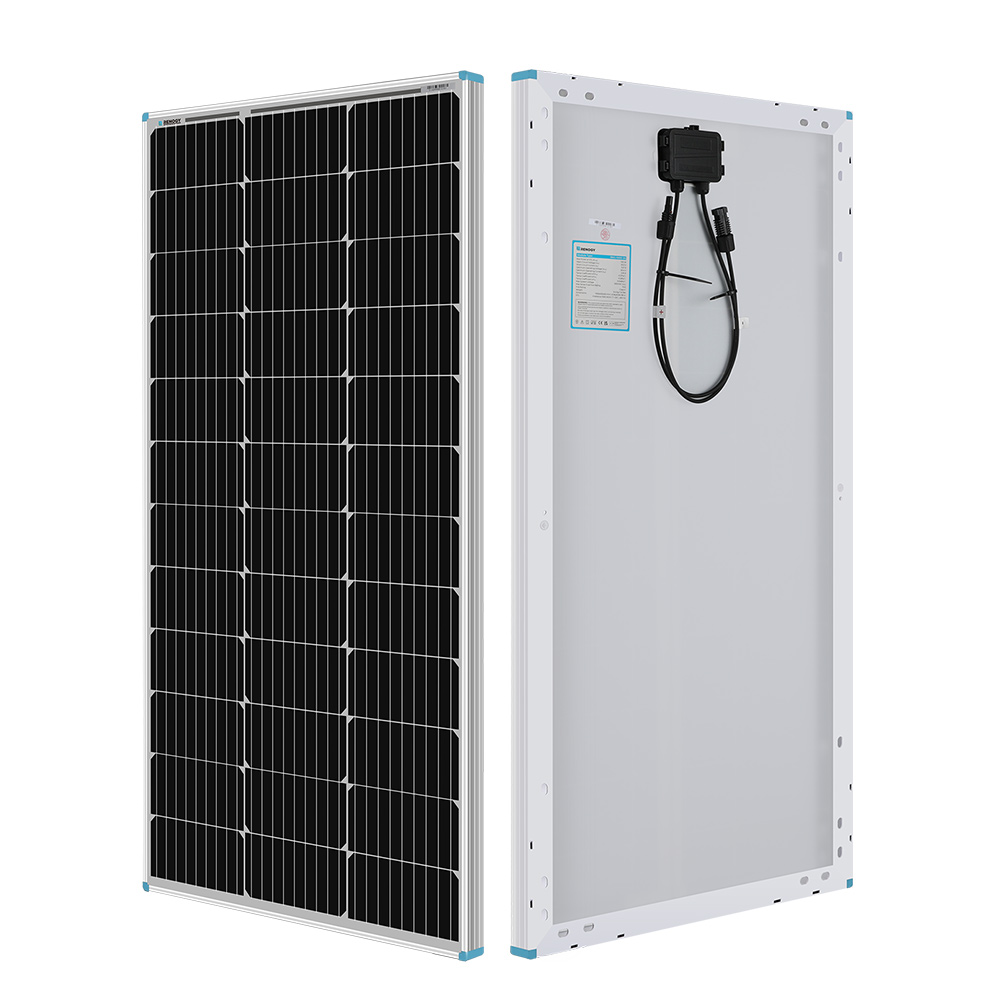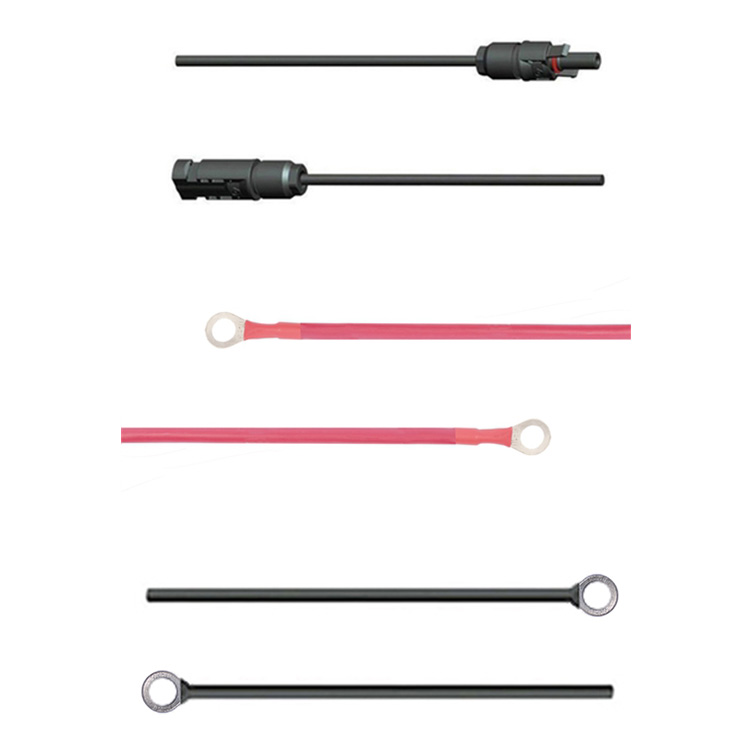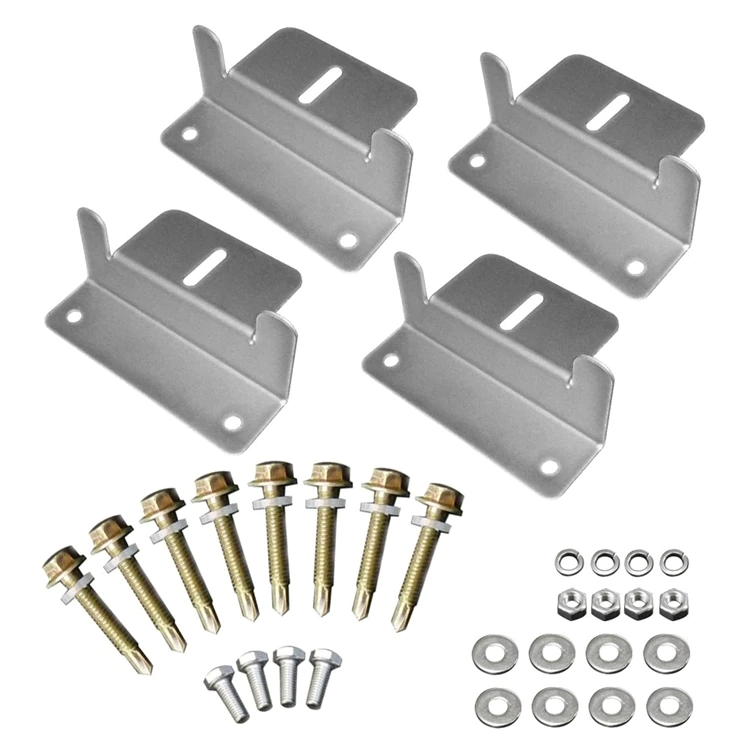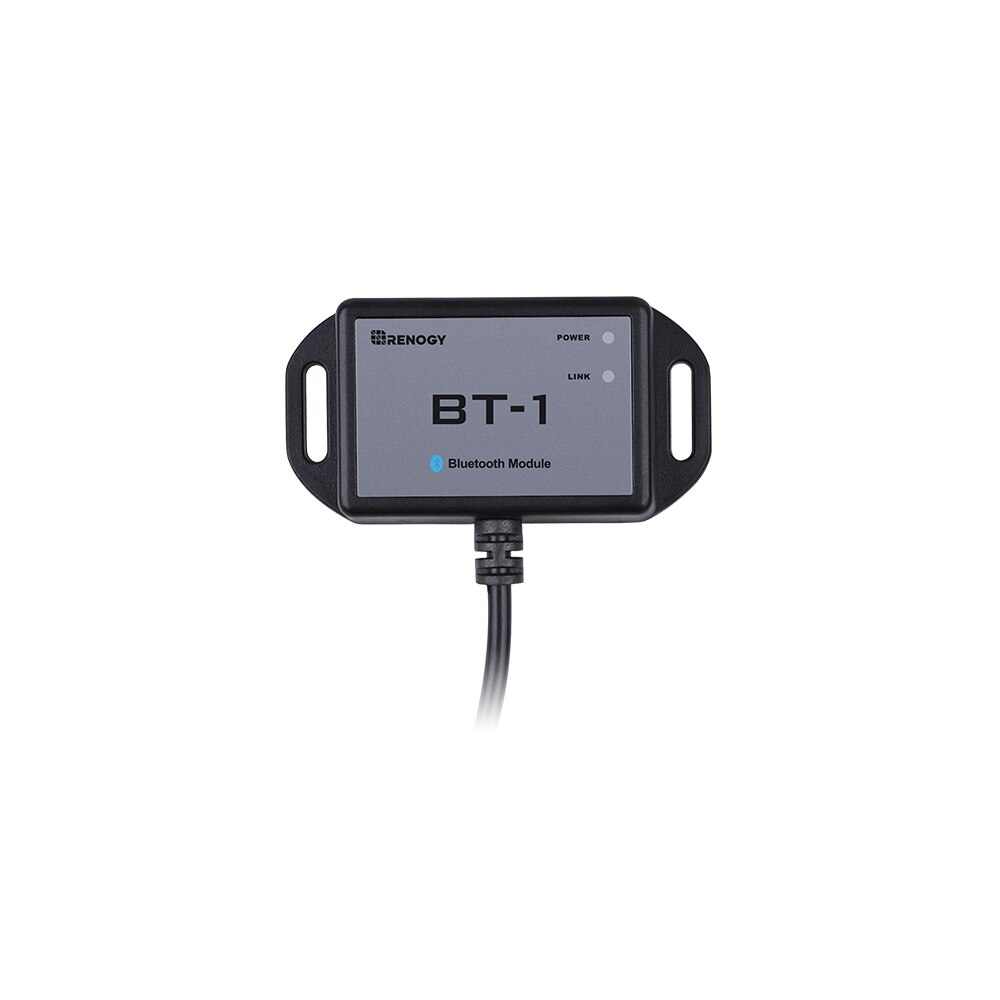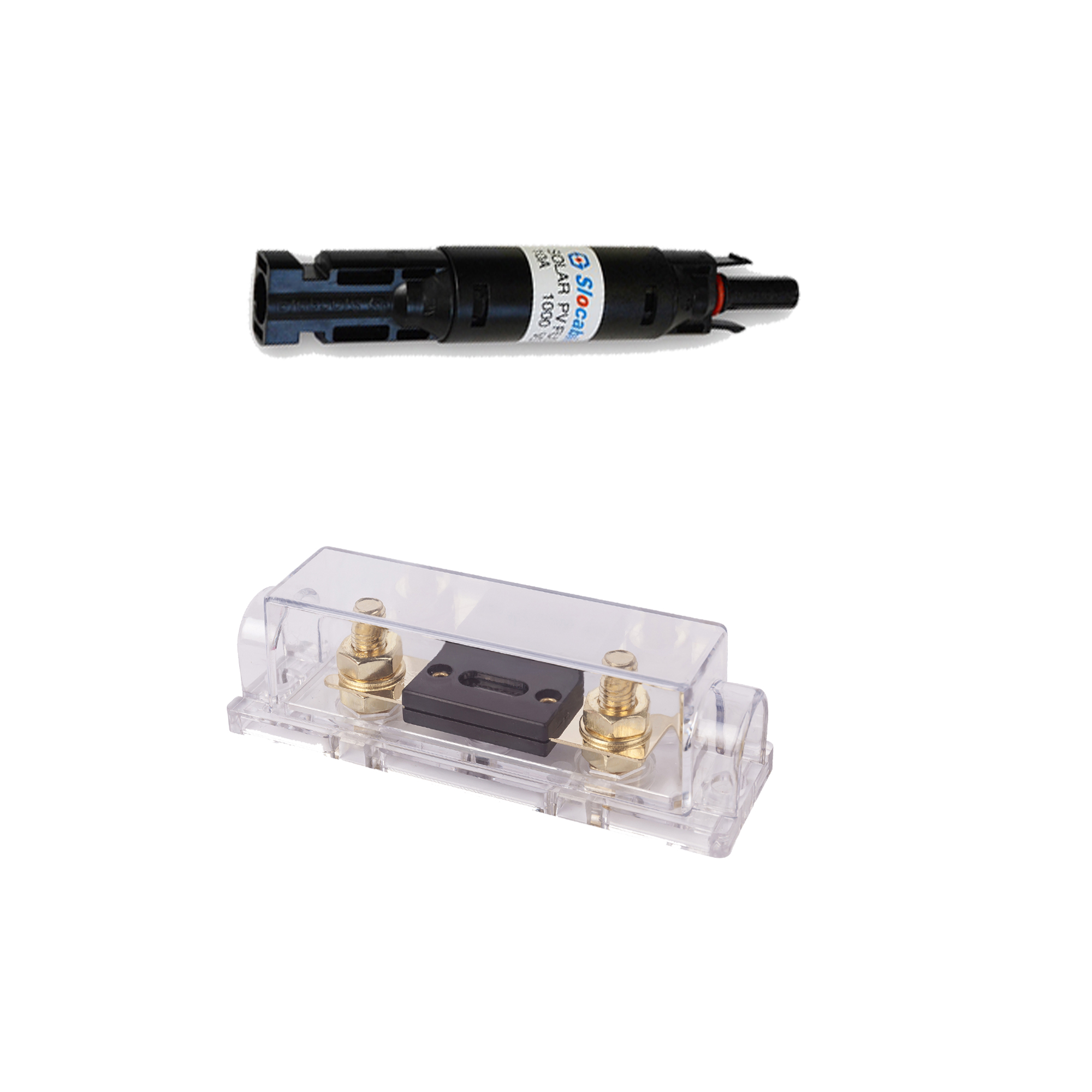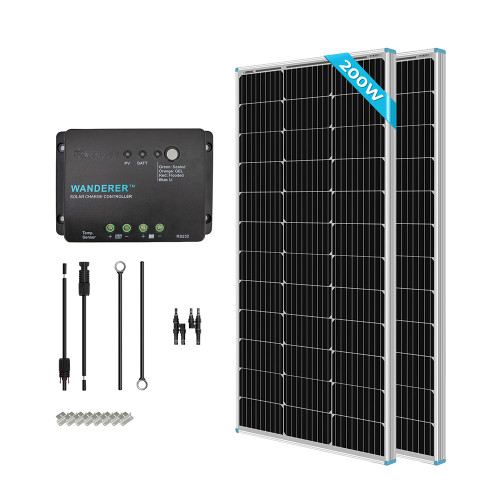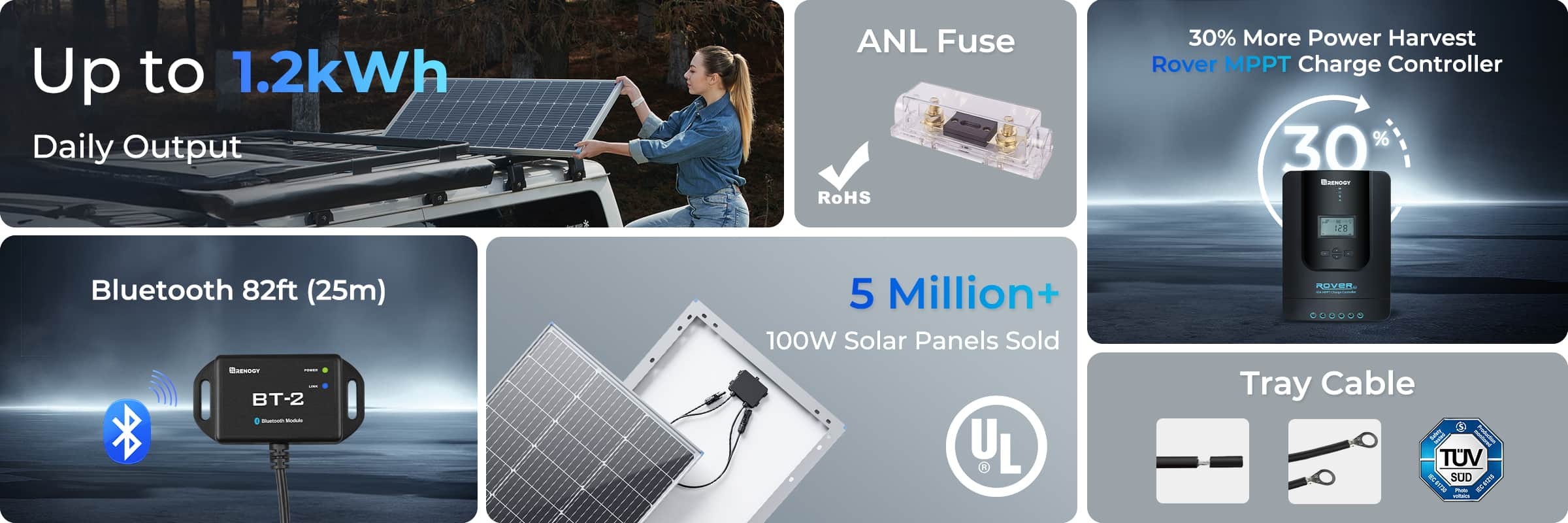

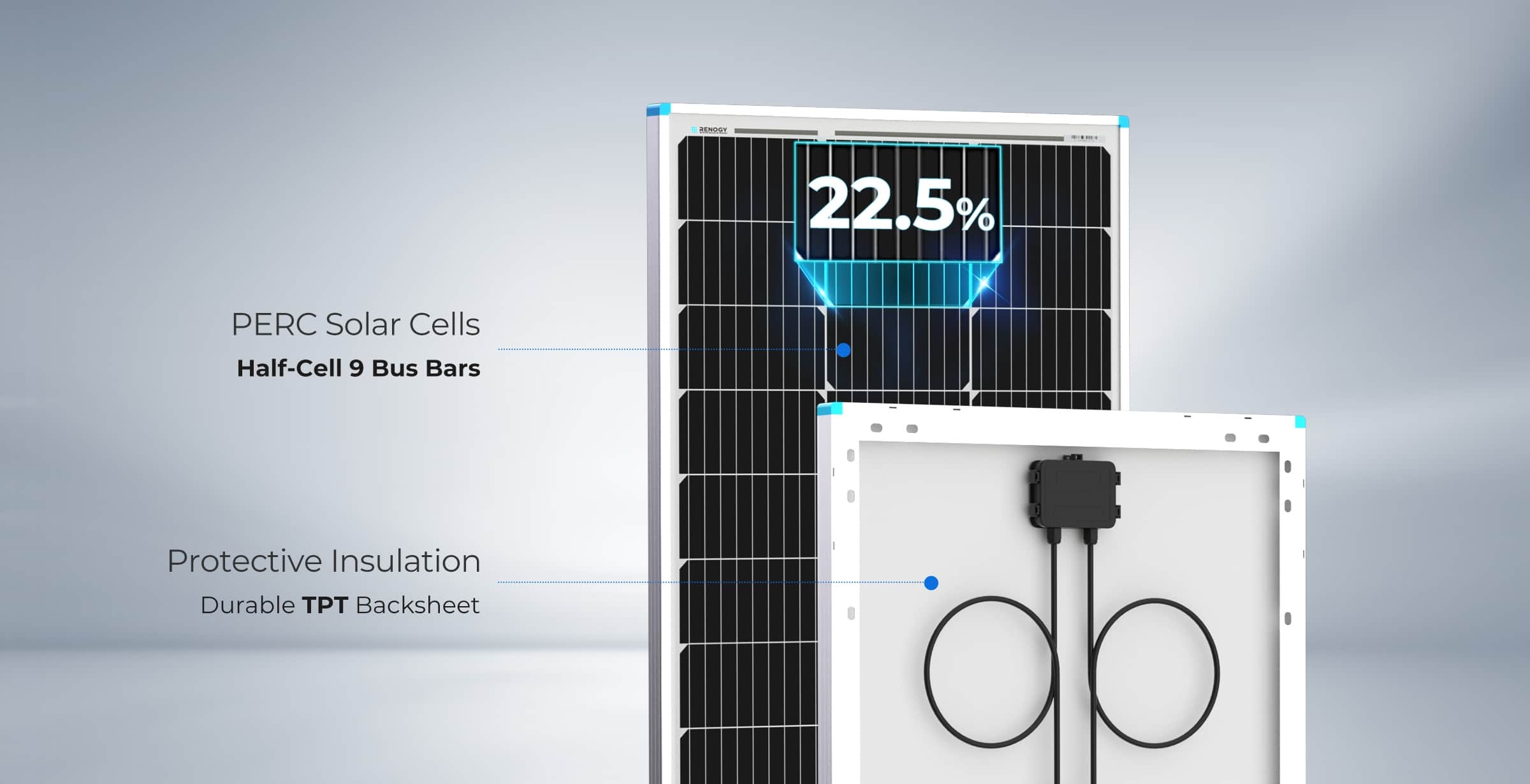
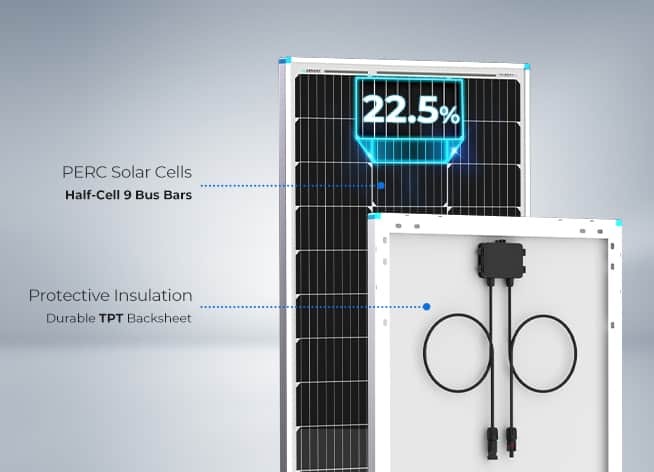


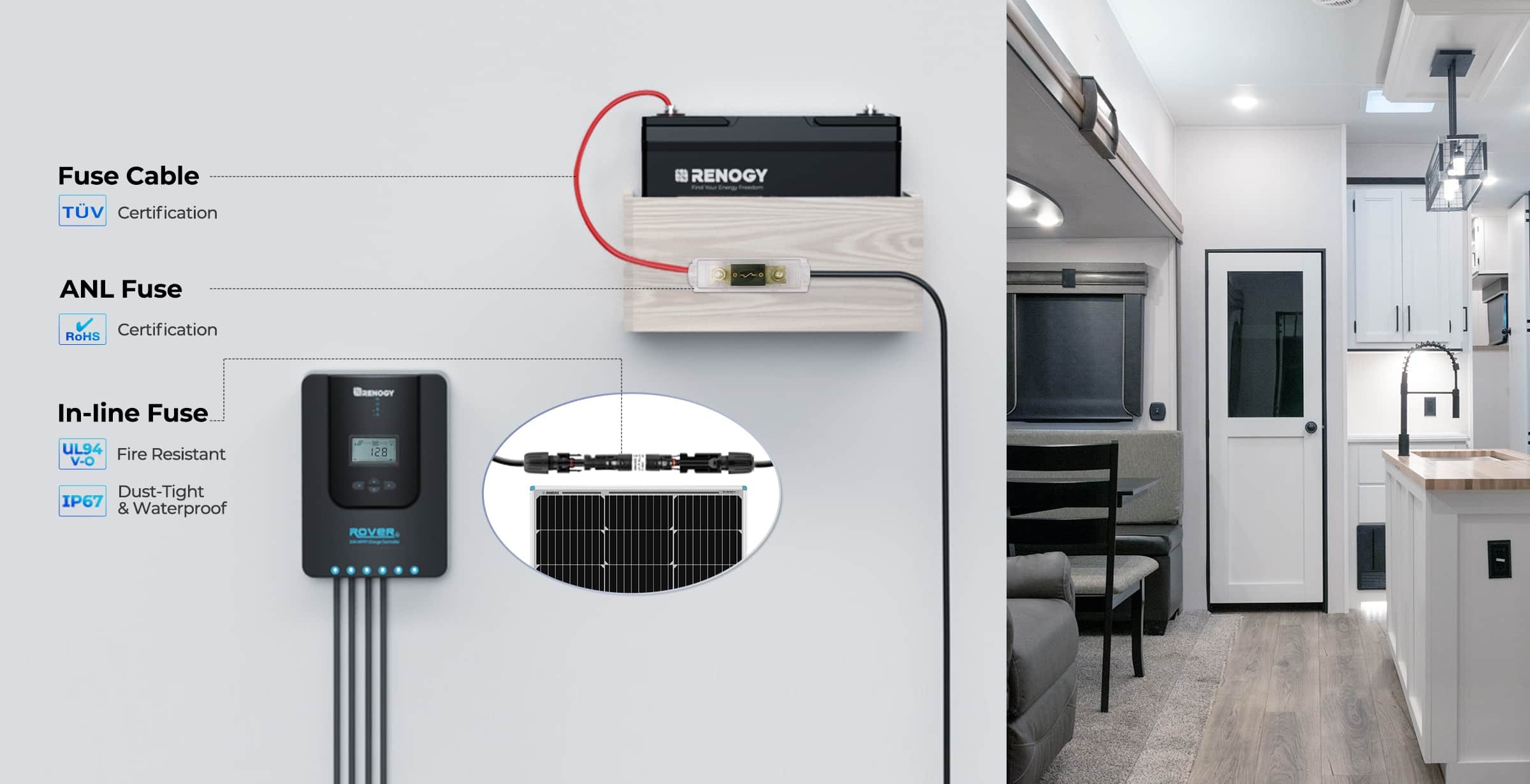
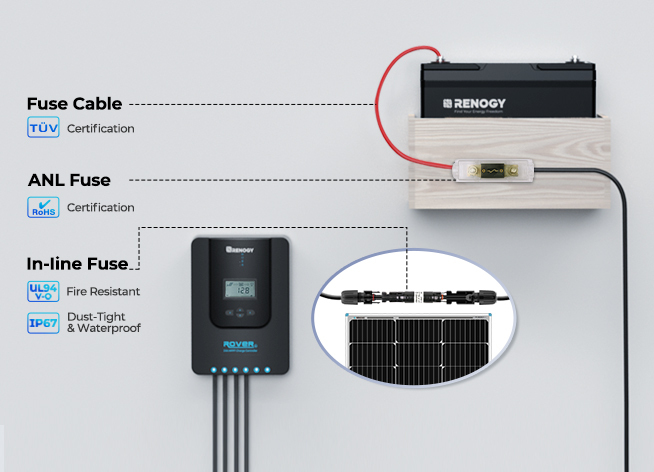

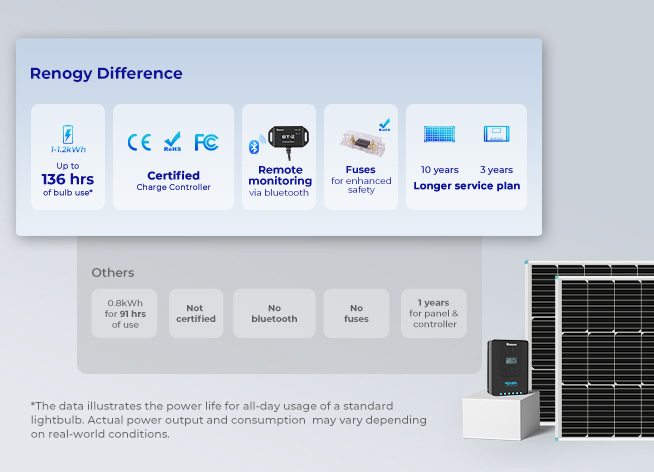
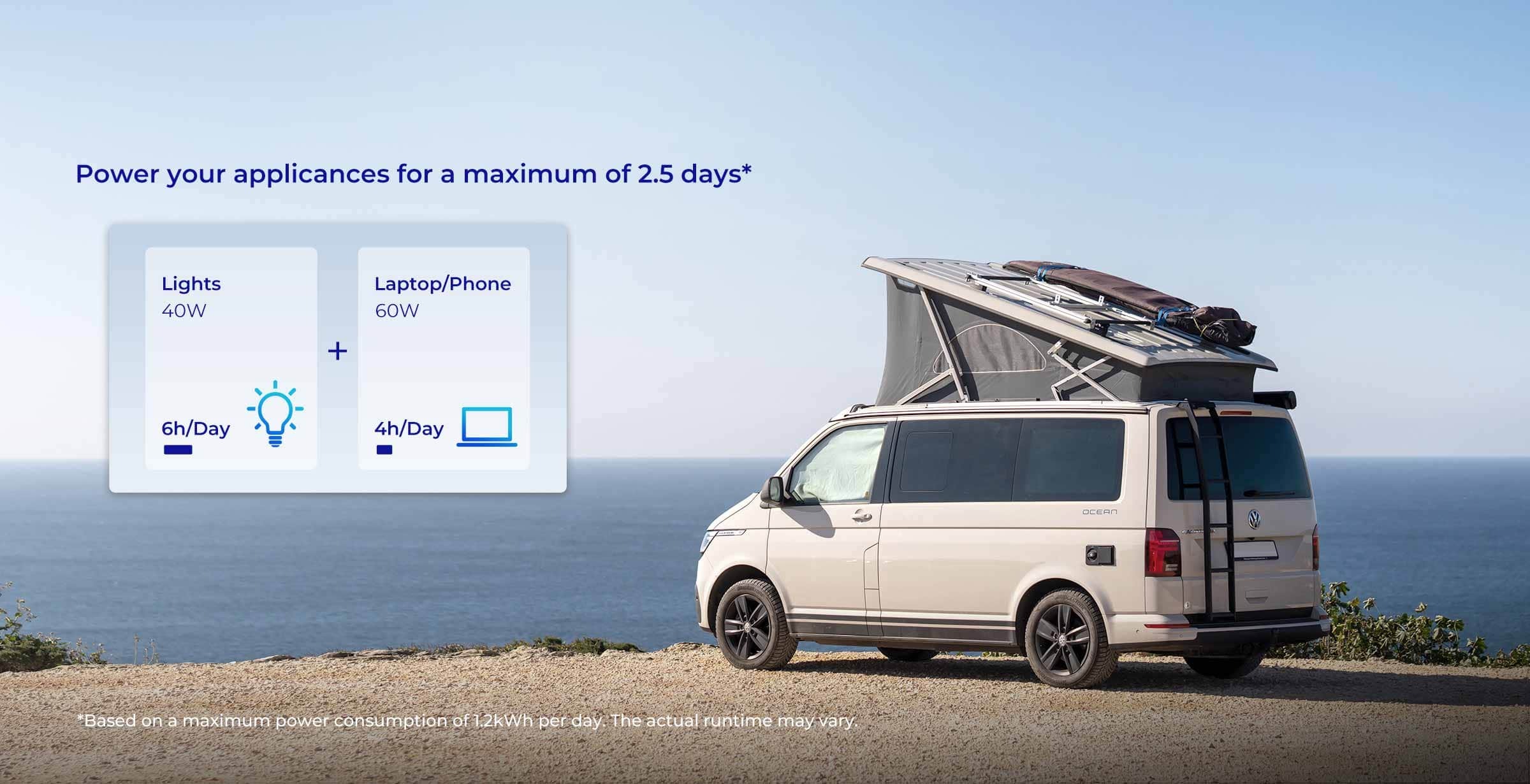

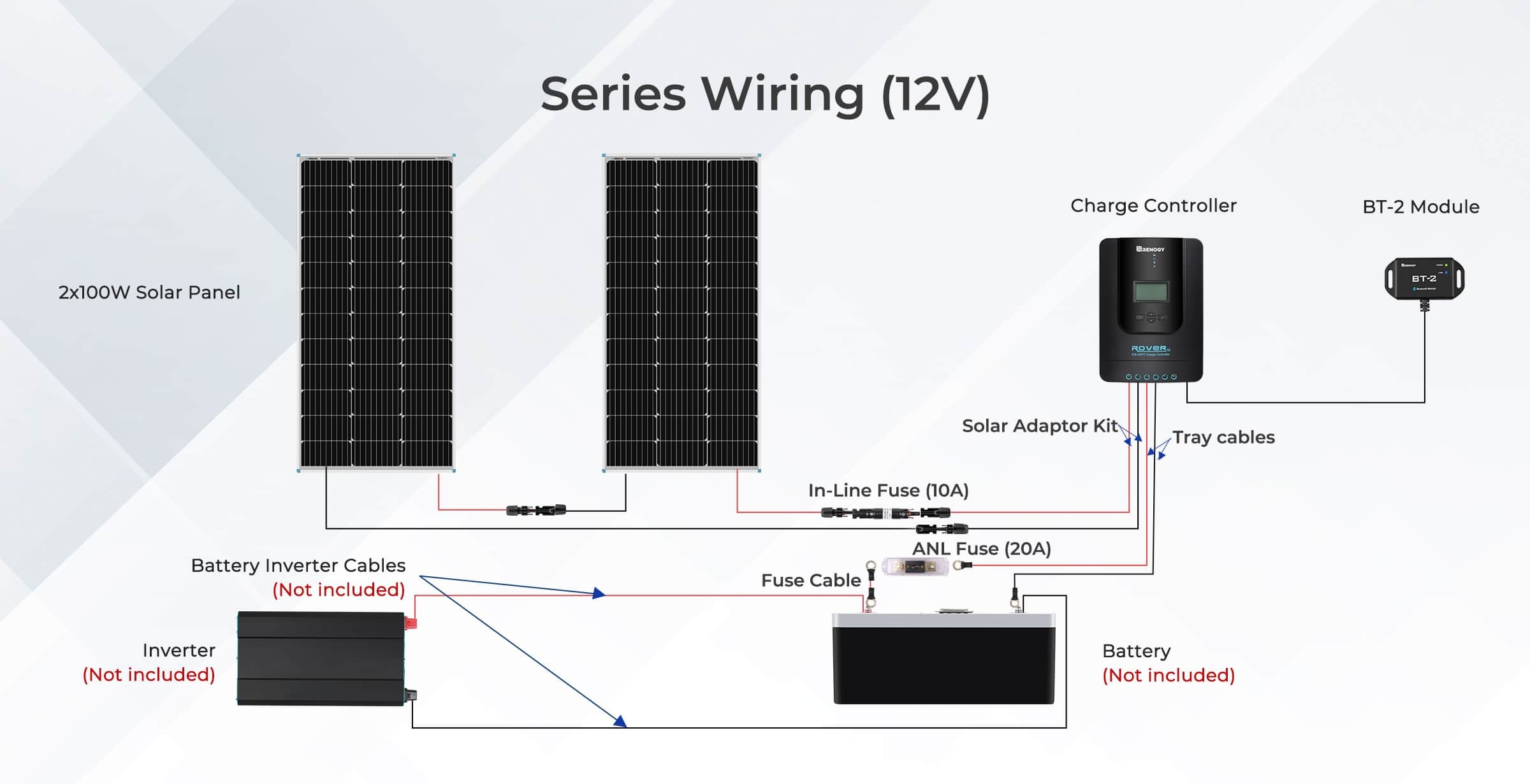

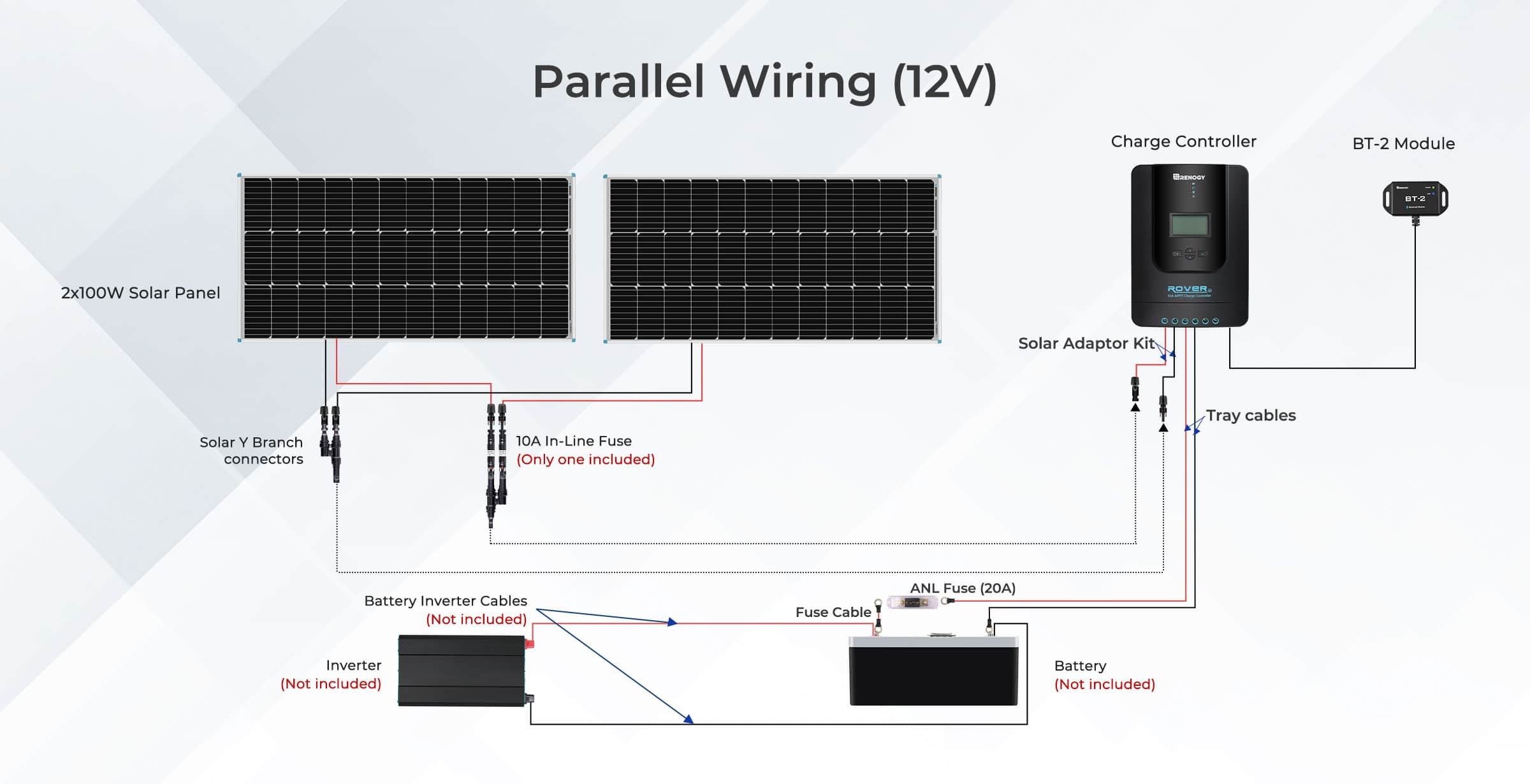


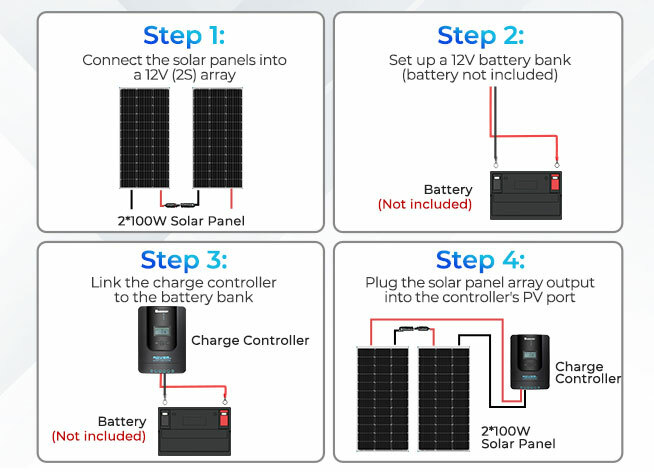
Package Includes
|
2 x |
Rover 20A MPPT Charge Controller 1 x |
|
1 x |
2 x |
|
1 x |
10A In-line Fuse and 20A ANL Fuse
1 x |
|
Solar Y Branch Connectors MMF+FFM Pair 1 x |
Maximum Power: 100W
Maximum System Voltage: 600V DC (UL)
Open-Circuit Voltage (Voc): 24.3V
Optimum Operating Voltage (Vmp): 20.4V
Short-Circuit Current (Isc): 5.21A
Optimum Operating Current (Imp): 4.91A
Dimensions: 41.8 x 20.9 x1.4 in
Weight: 14.1lbs
Nominal Voltage: 12V/24V DC Auto Recognition
Rated Charging Current: 20A
Rated Load Current: 20A
Max. Battery Voltage: 32V
Max. PV Input Power: 260W/12V, 520W/24V
Max. PV Input Voltage: 100VDC
Operating Temperature: -35°C to +45°C
Max.Terminal Size: 8AWG
Rated Load Current: 10% to 90% NC
Overall Dimension: 8.3 x 5.9 x 2.3 in
Length: 20ft
Wire Gauge: 10AWG
Rating Voltage: 600/1000V
Temperature: -40°F to +185°F
Rating Voltage: 600/1000V
Length: 8ft
Wire Gauge: 10AWG
Temperature: -40°F to +185°F
Length and Wire Gauge: 2ft and 10AWG
Rating Voltage: AC Uo/U 0.6/1 KV, DC 1.8KV
Temperature: -40°F to +194°F
opc:
Rated Current: 10A
Rated Voltage: 1000 V DC
Contact Material: Copper, Silver Plated
Replaceable Fuse: Cylindrical PV Fuse (10x38mm)
Current Rating: 20A
Voltage Rating: 72V
Interrupt Capacity: 40A
opc:
Withstanding voltage: 1000V DC(TUV), 600V(UL)
Temperature: -40°F to +194°F
Protection Class: Class II
Protection Degree: IP67, mated
Rated Current: 50A
opc:
Input Voltage: 5V
Communication Range: ≤82ft
Compatible With: All Renogy Controllers with RJ12 port
Operating Temperature: - 20℃~85℃(-4°F to 185°F)
Eight Long Cap Bolts and Four Short Bolts: Four Spring Washers and Four Washers
Four Z Shape Solar Panel Brackets: Four Nuts
Panels: 25-year power output warranty: 5 year 95% output warranty, 10 year 90% output warranty, 25 year 80% output warranty 10-year material and workmanship warranty
Accessories: 1-year material and workmanship warranty
FAQ
A solar panel has to be connected to a charge controller to regulate current, and a battery to store the electrical power. You will need adapter kit cables to wire the solar panel(s) and charge controller, and tray cables connecting the charge controller to a deep-cycle battery.
Downloads
 |
|||
 |
|||
| Please click the links below to download the manuals: | |||
| BT-1 Bluetooth Module | |||
| 20A Rover Charge Controller | |||
| Mounting Z Brackets | |||
















